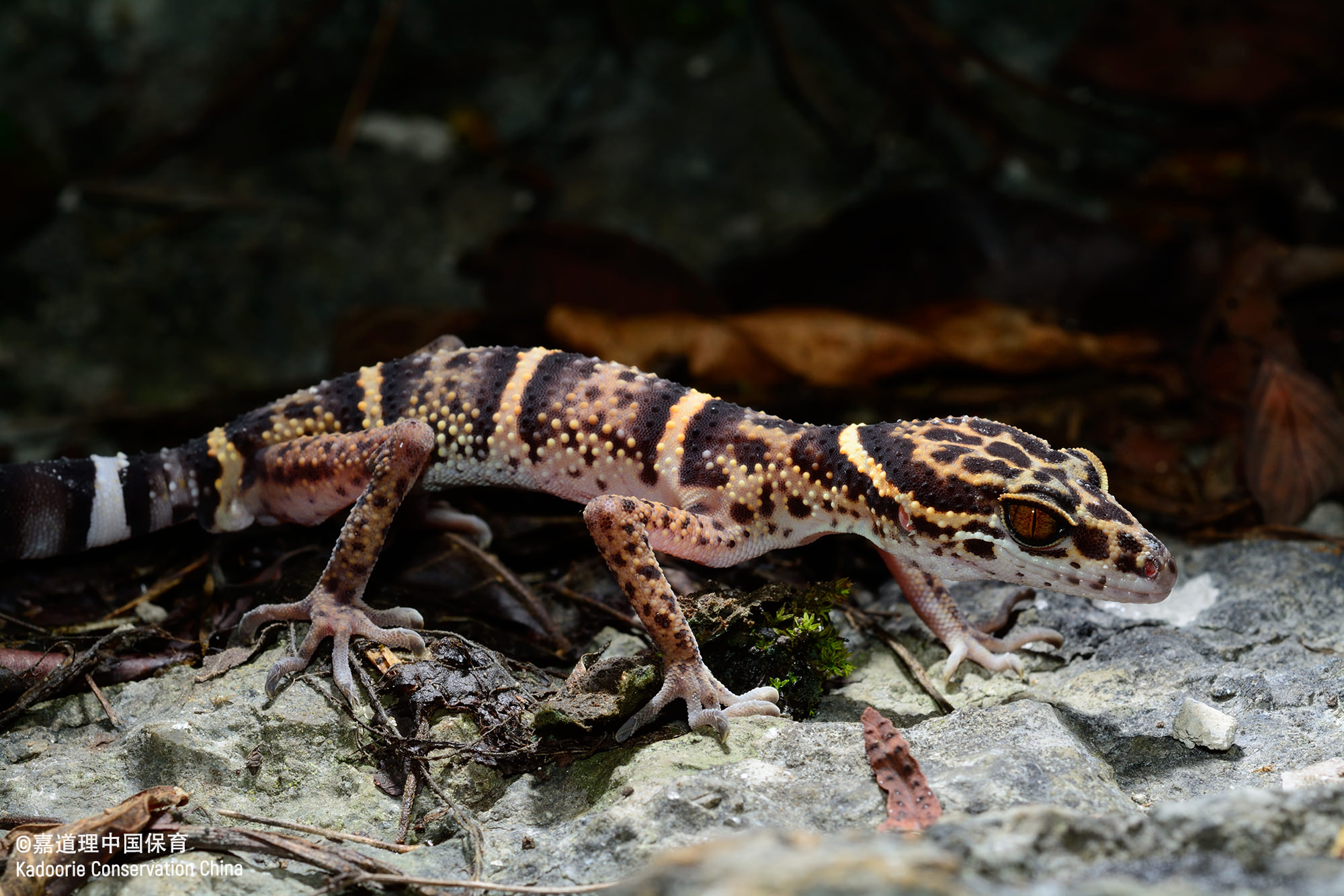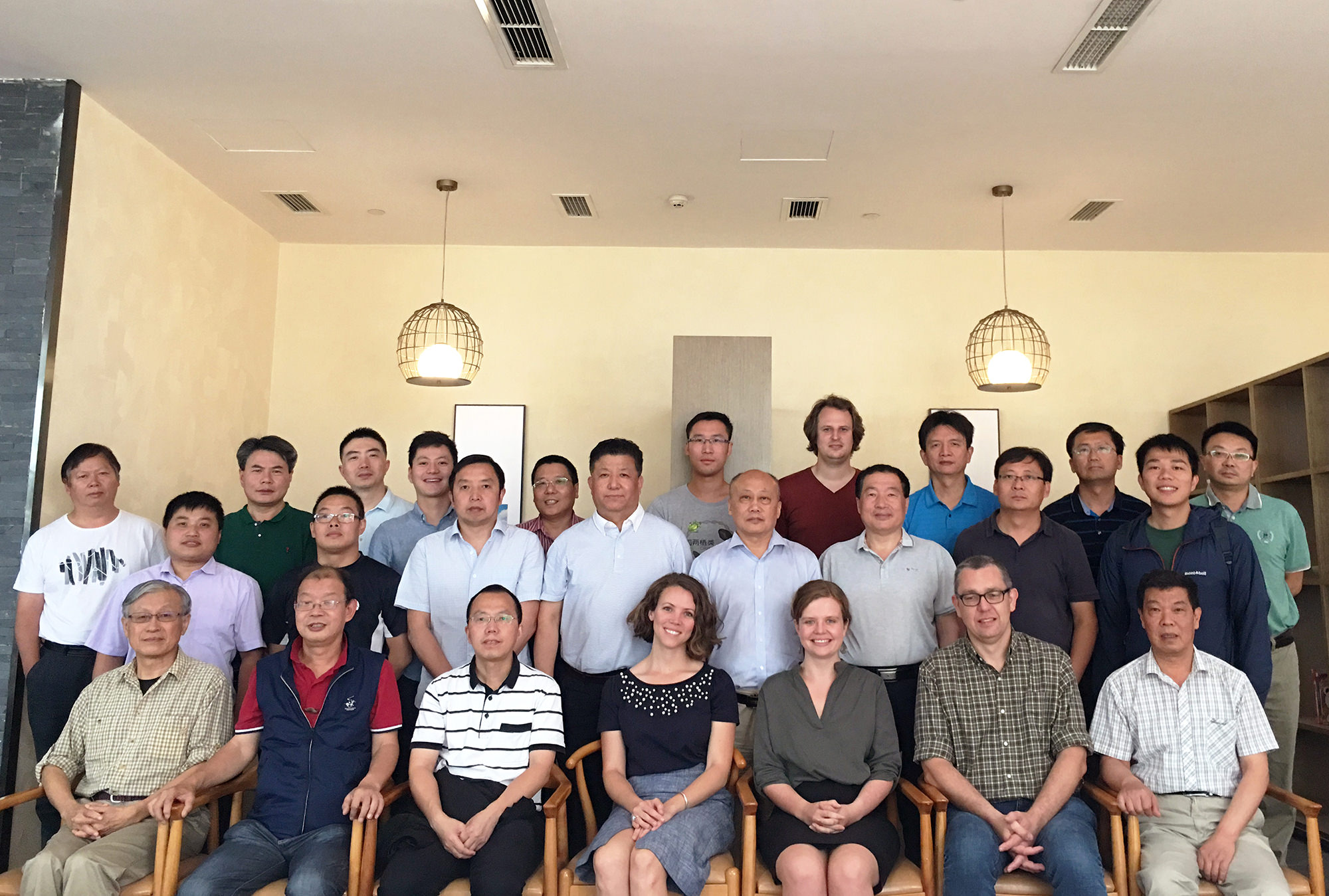KFBG participates in IUCN Red List evaluation for China’s lizard and gecko species
The conservation status for nearly 200 China’s lizard species, which was assessed for the first time last year to help prioritise conservation action, have started to go live in phases on the IUCN Red List of Threatened Species website recently. The evaluation was conducted by a team of experts including Kadoorie Conservation China’s Senior Conservation Officer Yang Jianhuan. Notable species whose extinction risk is under review included Chinese Cave Geckos (Goniurosaurus kadoorieorum and Goniurosaurus liboensis).
Meanwhile, the IUCN Red List has begun to look at the threats faced by amphibian species worldwide and update their conservation status for a second time. More than 400 Chinese species were evaluated in a workshop held in Chengdu, Sichuan, recently by a squad of 32 specialists from 21 institutions including IUCN, KFBG, Kunming Institute of Zoology, Chinese Research Academy of Environmental Sciences, and Sun Yat-sen University in China; National Museum of Natural Science in Taiwan; and Seoul Women's University in South Korea.
Since 1963, the IUCN Red List of Threatened Species started using specific criteria to rigorously classify the extinction risk of thousands of species with the aim to inform the public and policymakers. It is the world’s most authoritative and comprehensive inventory of the global conservation status of wildlife. It divides species into nine categories: Not Evaluated (NE), Data Deficient (DD), Least Concern (LC), Near Threatened (NT), Vulnerable (VU), Endangered (EN), Critically Endangered (CR), Extinct in the Wild (EW), and Extinct (EX).
Kadoorie Conservation China have over the years participated in the evaluation of more than 200 species, including prominent species like the Hainan Gibbon, Chinese Pangolin, Masked Palm Civet, Hong Kong Cascade Frog, Romer’s Tree Frog and Golden Birdwing.
Kadoories’ Cave Gecko (Goniurosaurus kadoorieorum) was discovered by the Kadoorie Conservation China team in Guangxi in 2015 and named after KFBG founders Sir Horace Kadoorie and Lord Lawrence Kadoorie, in celebration of their life-long support of biodiversity research and conservation in southern China. It is the only species of the world’s 17 Goniurosaurus species to have olive green eyes. Its conservation status was evaluated for the first-time last year.
The latest IUCN evaluation classifies Goniurosaurus liboensis as Endangered. It is only found in karst forests of Guizhou and Guangxi.
Tengchong Spadefoot Toad (Leptobrachium tengchongense) was discovered by the Kadoorie Conservation China team in Yunnan in 2017. It has a characteristic light blue upper iris. Its conservation status has been assessment during a workshop this year.
The IUCN Red List has begun to look at the threats faced by all known amphibian species worldwide and update their conservation status for a second time. More than 400 Chinese species were evaluated in a workshop in Chengdu, Sichuan, recently by a squad of 32 specialists from 21 institutions including IUCN, KFBG, Kunming Institute of Zoology, Chinese Research Academy of Environmental Sciences, and Sun Yat-sen University in China; National Museum of Natural Science in Taiwan; and Seoul Women's University in South Korea.

